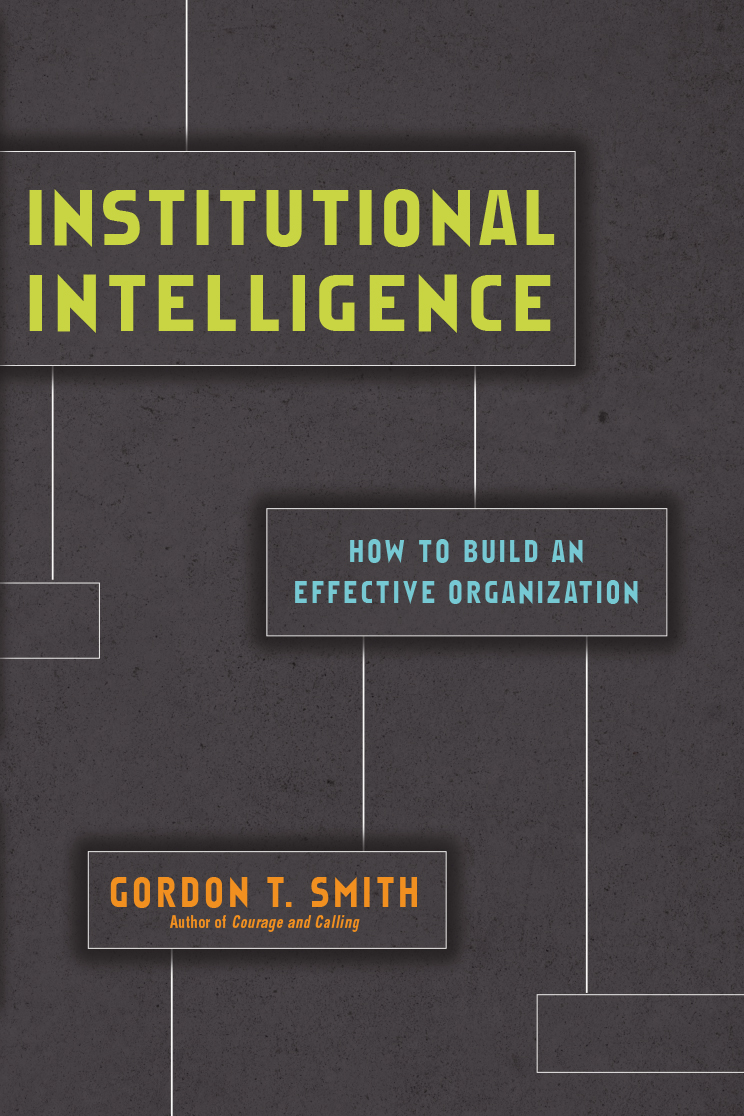Gordon Smith: Institutional Intelligence
 Gordon T. Smith, Institutional Intelligence: How to Build an Effective Organization (Downers Grove: IVP Academic, 2017), 225 pages, ISBN 9780830844852.
Gordon T. Smith, Institutional Intelligence: How to Build an Effective Organization (Downers Grove: IVP Academic, 2017), 225 pages, ISBN 9780830844852.
With a cover made to look like an organizational chart (indeed, the author believes in hierarchy), and the catchy, contemporary title, a potential reader might assume the content is similar to the business leadership manuals that have been popular over the past thirty years. In fact, the reader wouldn’t be far off. The focus of the book is primarily focused on non-profit organizations and how to lead them. Institutions, Smith iterates repeatedly, matter and they are “essential to human flourishing.” For an organisation to be effective, members must have institutional intelligence: “the wisdom of working effectively within an organization with others … by understanding how institutions work, how they can be effective, and how all people in the organization can contribute to the whole system.” This book is relevant not only for church planters—just starting new institutions—but also for seasoned pastors and other non-profit leaders who want more synergy between the institution’s mission and its operations.
The book contains ten chapters, a conclusion, and three appendices. Chapter one introduces seven “distinctive” features of an effective organization. These features include mission clarity, appropriate governance, quality of personnel, a vibrant culture, financial resilience, appropriate ‘built space’, and strategic alliances. Indeed, these seven characteristics comprise the remaining chapters of the book.
Institutions matter.
Good governance is another distinctive feature of an effective organization. In chapters three and four, Smith posits that institutions must ask themselves questions about decision-making and implementation. Effective organizations not only make good decisions, but they have the capacity to implement those decisions. Leaders should have a clear understanding of how to use power responsibly and to whom they are accountable. Smith specifies three “entities” of an effective organization: executive, board, and practitioners. Each entity needs to know what it is responsible to achieve. As a learning organization, effective institutions get the wisdom and knowledge they need to make good decisions and ensure they can carry them out.
Identity and purpose are essential to having an effective organization.
Category: Ministry, Spring 2019


